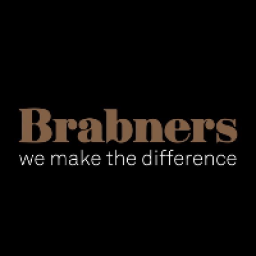The Finance Act 2020 amends the current insolvency regime and will take effect on any insolvency commencing on or after 1 December 2020.
Consequently, HMRC will regain secondary preferential status for claims relating to taxes collected on its behalf but limited to VAT, PAYE, Employee NICs, and Construction Industry Scheme (CIS) Deductions. These new rules are not applicable to ‘direct taxes’ such as Corporation Tax and Employers NICs.
The Cork Committee and its stringent legal analysis of the insolvency regime gave rise to much of Insolvency Act 1986 and indeed the revisions in Enterprise Act 2002, including their suggestion of a 10% levy on floating charge holders being made available to unsecured trade creditors which formed the basis of the Prescribed Part.
The Cork Committee reviewed the position of HMRC in the insolvency regime and strongly rejected the two justifications for crown preference. The first justification was that unpaid tax was a debt ‘owed to the community’. This was dismissed as it was seen that depriving a private creditor of the benefit of the realisation of company assets “may cause substantial hardship, and bring further insolvencies in its train". Furthermore, the level of recovery of preferential taxes was deemed "likely to be insignificant in terms of total government receipts".
The government proposed that HMRC debts were “involuntary” and thus deserved a preferential status. The Cork Committee decided that this was an irrelevancy as trade creditors’ debts could also be considered involuntary as providing goods or services to a company should not come with an inherent risk of not being remunerated in the same way lending does – hence lenders having access to security.
The Cork Committee suggested that HMRC debts should not be preferential, and thus when its status was rebutted in Enterprise Act 2002 the amount of funds made available to floating charge holders and unsecured creditors increased generating the desired ethos of recovery as opposed to death. There was a sentiment that trade creditors and HMRC were ‘in it together’.
The key differences to the state of play pre-Enterprise Act 2002 are that preferential status will only apply to taxes already collected by a company but not yet paid to HMRC. This aims to “reduce tax losses when a business goes into insolvency by giving HMRC greater priority in recovering taxes that are temporarily held on trust by the business on behalf of its employees and customers”.
What will this mean?
The likely downsides of the return of Crown preference are as follows:
- Less money will be available for unsecured creditors of insolvent companies
- There will be a higher level of risk for lenders, traders, and investors
- Small and medium-sized enterprises may have reduced access to finance which may lead to an increase in the number of corporate insolvencies as a direct result of there being less money available to fund business growth and rescue
- The value of secured creditors’ securities will likely be attenuated
- Restructuring mechanisms such as Company Voluntary Arrangements will be more difficult as they require the consent of the preferential creditor. This will give HMRC considerably more influence over insolvency processes.
The Joint Liability Notice
The Finance Act 2020 arms HMRC with a new arsenal of corporate veil piercing weapons for directors who have not been accounting to them properly for tax or where evidence of ‘phoenixing’ is found. When an insolvent company has evaded taxes or repeatedly not paid taxes due its directors and controlling minds may be made jointly and severally liable for those tax debts. This means that the veil of limited liability can be hoisted up by HMRC and directors will be made personally liable.
What are the New Rules?
S 100 and Schedule 13 of the Finance Act 2020 set out the conditions and penalties under the new Joint and Several Liability rules. In summary, these may be issued where:
- A company has entered into tax avoidance arrangements or has engaged in tax evasive conduct
- The company has entered into an insolvency procedure or there is a serious concern that it will
- There is an individual responsible (alone or with others) who engaged in, assisted with, or facilitated the conduct set out in point 1 above and received a benefit relating to that conduct.
- The company has a tax liability and it is a serious possibility that some or all of that liability will not be paid.
When the above are satisfied (the uncondensed conditions are delineated in detail in the act itself) notice may be issued to a director stating the amount of the tax liability, the specific conditions infringed as well as the procedure going forward. The immediate risk following the receipt of one such notice is personal liability for the tax debts of the company in question and professional advice should be sought without hesitation.
Repeated insolvency non-payment cases
A joint liability notice may also be served on a director in cases where repeated insolvencies or non-payment of taxes have occurred. The conditions are outlined below:
- An individual has had a relevant connection with two or more companies over the last 5 years where the companies have been subject to insolvency procedures with a tax liability being due or have failed to submit a tax return
- The individual also has a relevant connection during the 5-year period with a new company carrying on the same or similar trade or activity as the old companies
- The old companies have a tax liability of at least £10,000 or the tax liability is more than 50% of the total of the companies’ unsecured creditors.
When the above are satisfied (the uncondensed conditions are delineated in detail in the act itself) notice may be issued to the relevant individual. This will state that, for the next 5 years, in the event of default the individual is joint and severally liable with the new company for its tax liabilities. The individual, in the event that any of the old companies have unsatisfied tax liabilities, is also jointly and severally liable for those tax liabilities with the old company.
How we can help
The return of Crown preference will have far-reaching consequences for businesses raising finance, lenders evaluating their security as well as recovery prospects for unsecured creditors.
Joint and Several Liability Notices have serious personal financial consequences for directors receiving them. When running your business you must consider your position in the event of an insolvency.
If you are concerned about your business or would like to discuss this further please get in contact with a member of the Brabners insolvency team.





